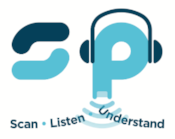Last-Minute Revision Tips for Learners With Dyslexia
The festivities are over and the baubles have gone back in the box for another year – and whilst we all breathe perhaps a little sigh of relief that we don’t have to pretend to be festive any more, for those of us sitting exams this January, it’s crunch time.
And whilst we’re big advocates of taking revision seriously and starting early, it doesn’t always happen that way. Perhaps learners have been unwell or stressed, perhaps they’ve been effected by school closures or staff absences due to Covid-19, perhaps their aspirations, priorities or future destinations might have changed – and that’s alright. There’s still time to pack in some quality revision sessions, and we’ve put together a handy list of ways to make it feel just a little easier when you’re revising alongside your dyslexia or literacy differences too.
🧠 Get hold of the basics!
Can you quickly get hold of a syllabus for the unit you’re studying, or even request a revision checklist from your class tutor or course leader? This makes it easier to get your head around what might or might not come up on an unseen exam, and target your revision accordingly. Past papers are also available to download from most exam board websites, so you can make sure you know what format the exam will come in before you enter the exam hall.
🧠 Make sure you’ve got the technology and adjustments you need.
Although it could be a little late to request adjustments like an ExamReader or even a human reader for the exam itself (although it’s always worth checking – liaise with class teachers, exam offices and SENCOs), if your dyslexia means you struggle with reading, a ReaderPen can make all the difference when it comes to turning textbooks into memorised facts you can pull on in an exam.
🧠 Revise the right way for you…
Dyslexia can make reading and handwriting arduous – and although we always he the image of ‘good revision’ as a stack of notes or a filled-out folder, it’s not always necessarily the best way for someone with literacy differences. And if you’re short on time, you don’t want to waste what time you have with methods that don’t do it for you – so it’s time to let go of a traditional view of revision. These days, some people like to use videos, some people record themselves speaking and play it back, some people find it works best interpersonally when they work in pairs or groups with their friends. There’s no right or wrong way, so if written revision doesn’t work for you, switch it out for something that does.
🧠 Work out your learning type – are you Visual, Auditory, or Kinaesthetic?
Part of finding the right way to speedily revise for you might be taking a closer look at what your learning type is. Do you respond better to pictures than text; do you take in video information better than audio information? You could be a visual learner, whereas somebody who prefers to make notes from a podcast or listen to a study guide with headphones could be an auditory learner. Kinaesthetic or ‘Tactile’ learners are learners who prefer to engage physically with information, and you can turn this into revision strategies by gamifying the information, creating pass-the-ball games and crosswords. Find out which you are at EducationPlanner.org.
🧠 And you can always mix it up!
Some research suggests that using multiple methods to memorise facts can actually make them easier to retain and call on when you need them. Dyslexia can make remembering facts difficult sometimes, and using different revision methods to make sure that your brain stores information in different ways might actually be helpful for people. So try mixing it up by redoing class notes with audio recordings, or breaking down video into flashcards, or even just writing it down and adding pictures to the page – it could make all the difference, and it doesn’t take up that much time to cover ground you’ve already covered even if it sounds a little counterintuitive if you’ve not got a lot of time left to cover a list of topics. It’s not about ticking all the boxes, it’s about making sure that you’re comfortable and making sure what goes in sticks.
🧠 Mind Maps might be handy…
Mind maps are agreed to be a pretty helpful way of revising when you’ve got dyslexia, and even if you’re an auditory or a kinaesthetic learner, they can be pretty handy for hacking your revision environment as they add a visual element to the revision process. They’re a great switch for written revision as you can open up the page without obfuscating your written text with things that can make it harder to read on the page, like different colours or varied fonts. Get some big paper, a legible pen, and really go for it - spread out your notes and give yourself the space you need, and then pop it on the wall above your desk for consistent reference.
🧠 Try not to panic.
If you’re dyslexic, short on time and feeling the exam pressure, stress and anxiety might start to set in. This is pretty normal, but make sure you’re sharing your concerns with your teachers, SENCOs, parents and therapists – a problem shared is a problem halved, and being open about the way you feel is the first way to determining if you need any further support. It’s nothing to be ashamed of at all. MIND has some useful strategies when it comes to beating exam stress available at their website – and don’t forget, as boring as it sounds, getting a good amount of sleep, exercise and nutrients in your diet is one of the best ways of waking up on the morning of your exam feeling ready to take on the world.
